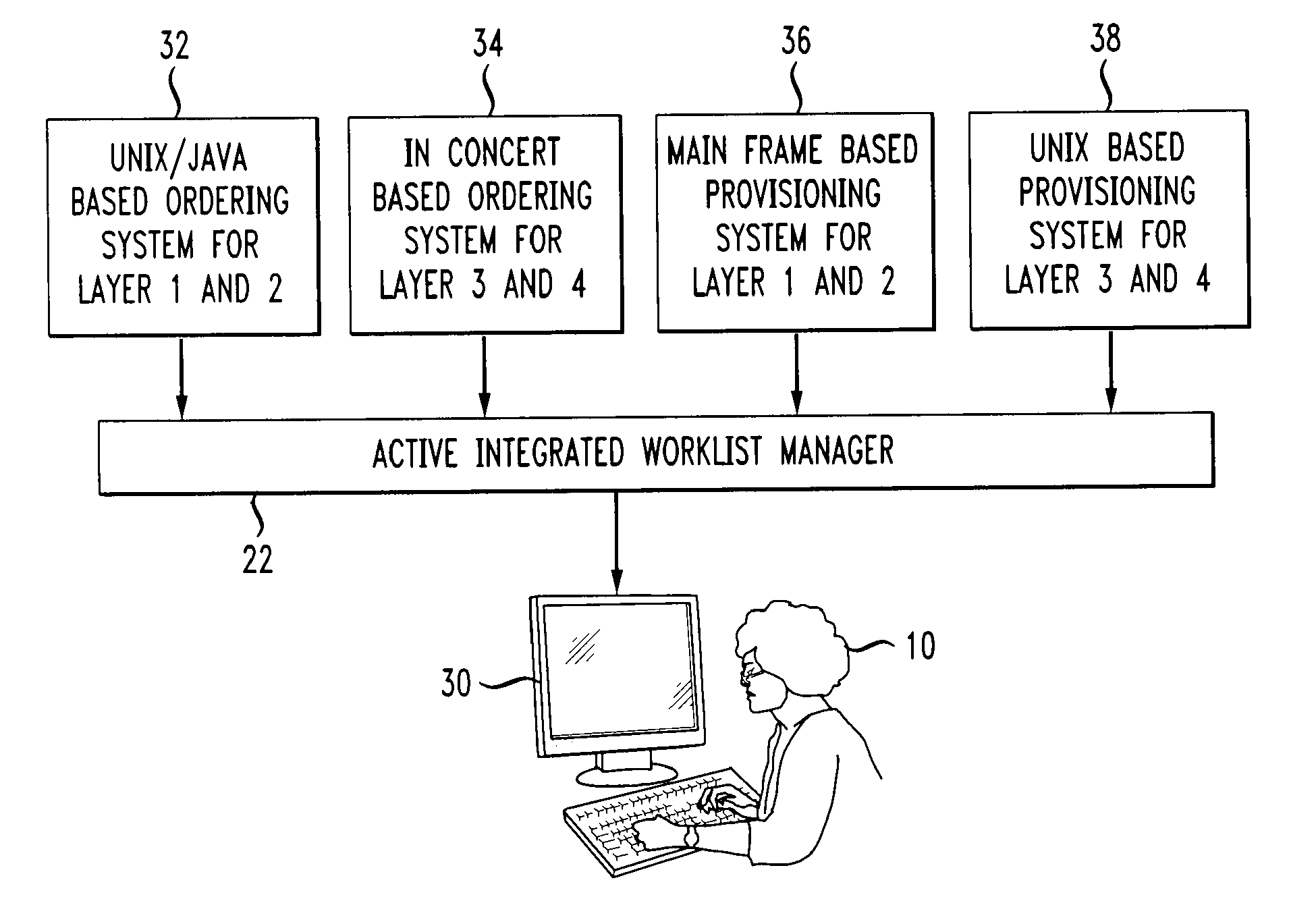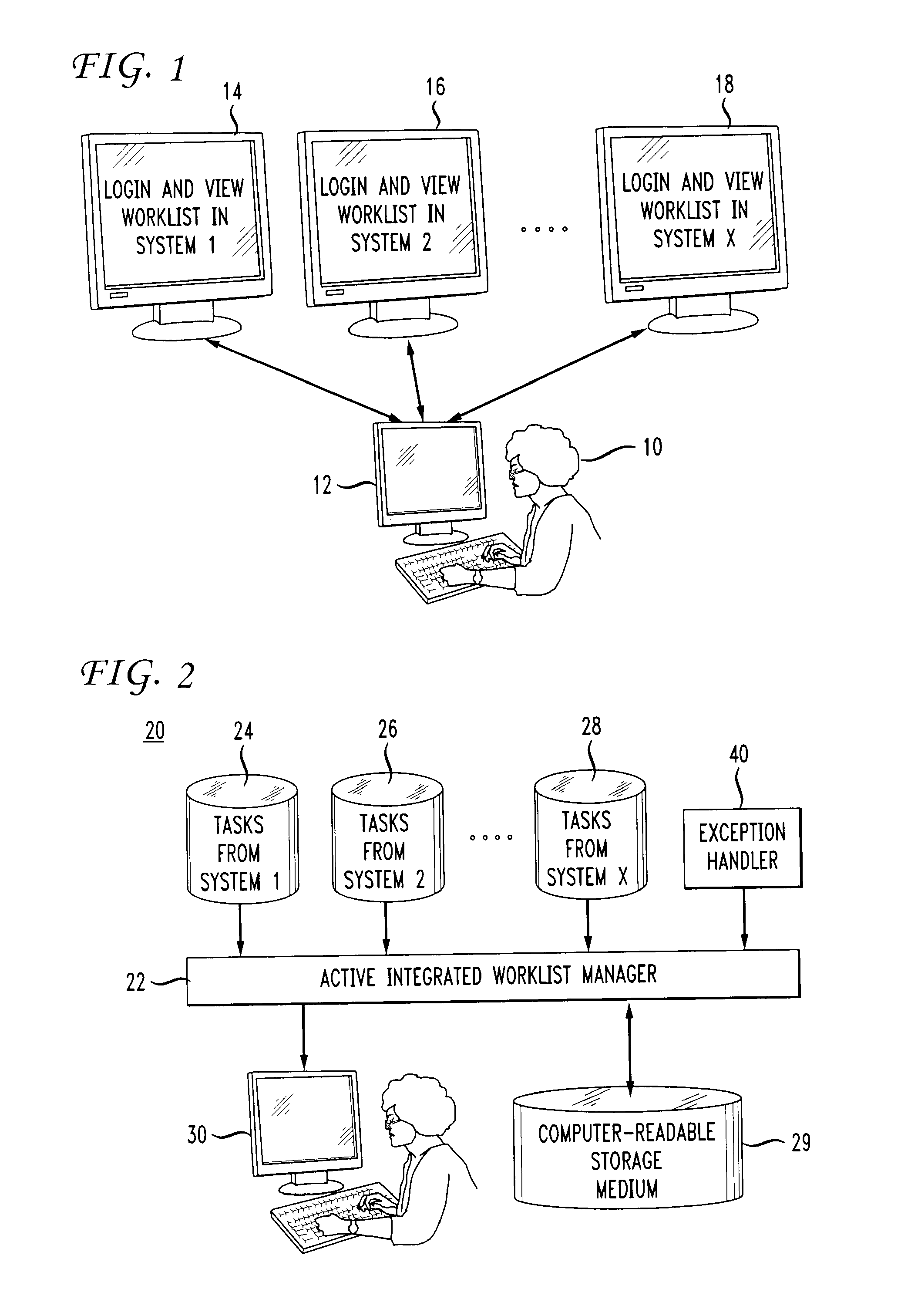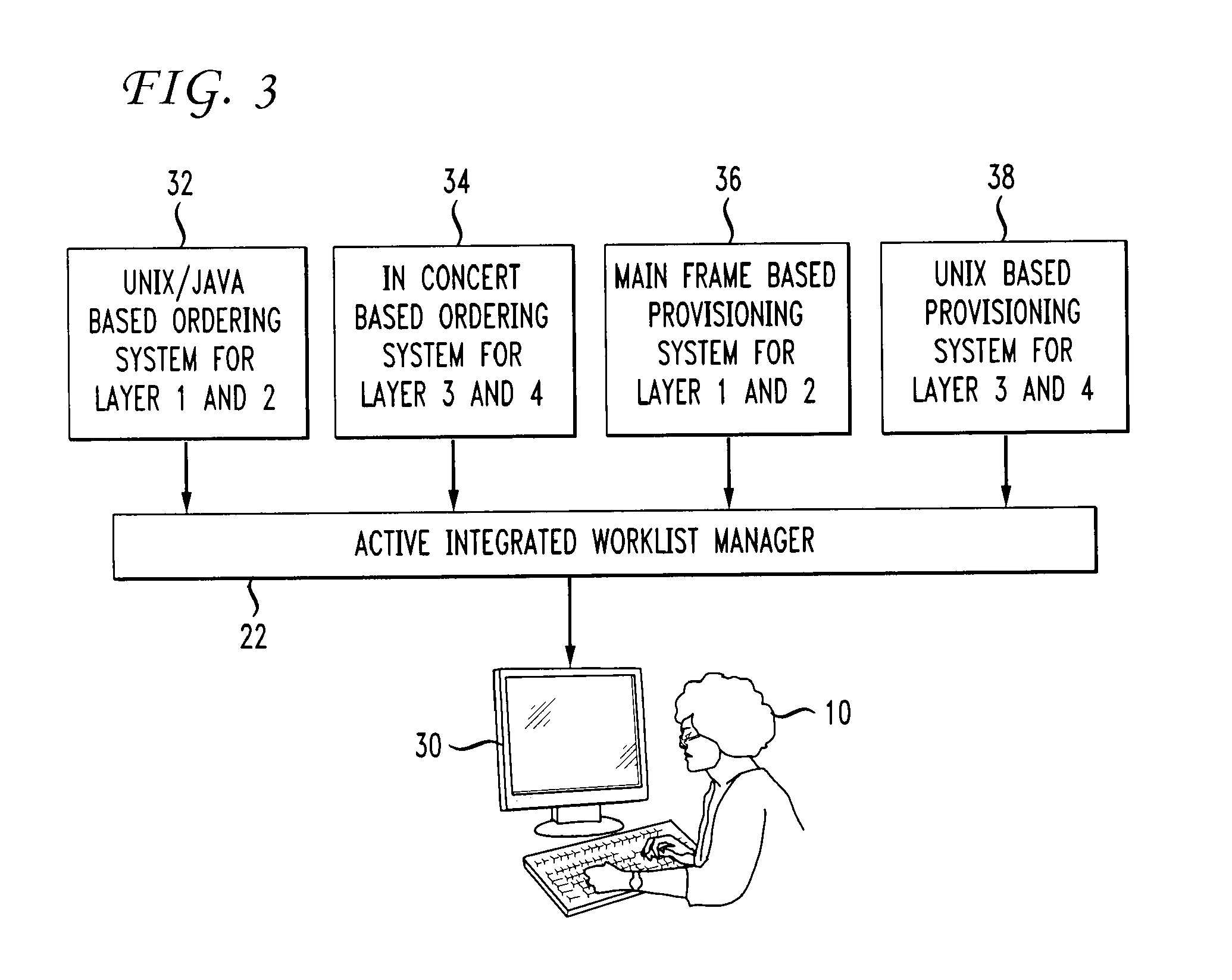Worklist integration of logical and physical tasks
a worklist and task technology, applied in the field of automatic electronic processing and provisioning of telecommunications products and services, can solve the problems of inability to complete an order in advance, inability to meet the requirements of the order, so as to avoid the delay in the provisioning process
- Summary
- Abstract
- Description
- Claims
- Application Information
AI Technical Summary
Benefits of technology
Problems solved by technology
Method used
Image
Examples
Embodiment Construction
[0025]There has been a recent trend in the telecommunications industry toward automating a significant portion of work involved in provisioning orders that have been placed. In the provisioning of more complex orders for emerging services, such as Voice-over Internet Protocol (IP), which are layered (at Layer 3, for example) over existing traditional services like ATM or frame relay at a Layer 2 and private lines such as T1 lines at Layer 1, such automation requires the integration of tasks generated on multiple worklists running on different sources, e.g., from different computer systems. The present invention provides a method for managing workflow in provisioning a service order by seamlessly integrating worklists from a plurality of existing sources generating the worklists into a single active worklist.
[0026]The traditional “work-when-scheduled” workflows may still be maintained on systems for some of the older technologies, for example, private line (T1) and frame relay servic...
PUM
 Login to View More
Login to View More Abstract
Description
Claims
Application Information
 Login to View More
Login to View More - R&D
- Intellectual Property
- Life Sciences
- Materials
- Tech Scout
- Unparalleled Data Quality
- Higher Quality Content
- 60% Fewer Hallucinations
Browse by: Latest US Patents, China's latest patents, Technical Efficacy Thesaurus, Application Domain, Technology Topic, Popular Technical Reports.
© 2025 PatSnap. All rights reserved.Legal|Privacy policy|Modern Slavery Act Transparency Statement|Sitemap|About US| Contact US: help@patsnap.com



